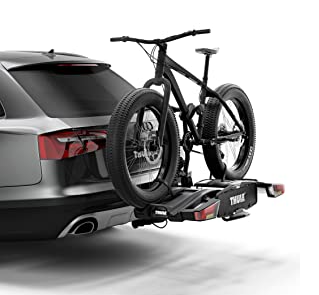
When it comes to transporting bikes with your car, choosing the right bike rack is essential. With several options available, it’s important to understand the pros and cons of each type to make an informed decision. How to choose a bike rack? In this article, we’ll explore different bike rack types and discuss their advantages and drawbacks.
Roof-Mounted Racks
Roof-mounted racks are a popular choice due to their versatility and accessibility. By attaching to the roof of your car, they provide a secure and stable platform for your bikes. One of the main advantages is that they don’t obstruct the rear of the car, allowing easy access to the trunk. Additionally, roof racks are compatible with a wide range of vehicles. However, it’s important to consider the increased height of your vehicle, which may limit clearance in low spaces such as parking garages. Loading and unloading bikes on the roof can also require some effort, especially for taller or heavier bikes.
Pro Tips and Tricks:
- Use a step stool or a platform to make it easier to load and unload bikes on the roof.
- Be mindful of overhead clearance when driving under low bridges or structures.
How to Choose a Bike Rack: Hitch-Mounted Racks
Hitch-mounted racks are known for their convenience and ease of use. They attach to a trailer hitch receiver at the back of your car, providing a sturdy and accessible solution. Platform-style hitch racks offer excellent stability and are compatible with various bike sizes and styles. Hanging-style racks are more affordable and can accommodate multiple bikes but may require the use of adapters for some bike frames. However, it’s important to note that hitch racks can obstruct rear visibility and access to the trunk. Additionally, they require a compatible trailer hitch, which may involve additional installation costs.
Pro Tips and Tricks:
- Consider using a hitch lock or cable to secure the rack and bikes to prevent theft.
- Use a bike frame adapter if you have non-standard or women’s-specific bike frames.
Trunk-Mounted Racks
Trunk-mounted racks are a cost-effective and versatile option. They attach to the trunk or hatch of your car using straps and hooks, making them compatible with most vehicle types. These racks are relatively easy to install and remove, making them a convenient choice for occasional use. However, trunk racks may have limitations on the number of bikes they can accommodate and can obstruct access to the trunk. They may also require additional straps or padding to prevent scratches on the vehicle’s surface.
Pro Tips and Tricks:
- Place a towel or padding between the bike frames to prevent scratches and damage during transportation.
- Avoid opening the trunk while bikes are loaded to maintain stability and prevent accidents.
Spare Tire-Mounted Racks
Spare tire-mounted racks are designed specifically for vehicles with external spare tires on the rear. They offer a simple and straightforward installation process by attaching to the spare tire mount. These racks are generally easy to use and can accommodate one or more bikes. However, spare tire racks may have weight limitations, so it’s essential to ensure that your bikes fall within the specified weight capacity. They can also obstruct the rearview, limiting visibility.
Pro Tips and Tricks:
- Regularly check the spare tire’s pressure and ensure it’s properly inflated to maintain stability and prevent any issues while transporting bikes.
- If your bike has a step-through frame or an alternative frame design, consider using an adapter bar to ensure a secure fit on the spare tire rack.
As you may have noticed, choosing the right bike rack involves considering your specific needs and preferences. Roof-mounted racks offer versatility and accessibility, but require effort to load and can increase the overall height of your vehicle. Hitch-mounted racks provide convenience and stability, but may obstruct rear visibility and require a compatible trailer hitch. Trunk-mounted racks are cost-effective and compatible with most vehicles, but have limitations on capacity and may obstruct trunk access. Spare tire-mounted racks offer simplicity and easy installation, but have weight limitations and can obstruct the rearview.
By understanding the pros and cons of each type of bike rack, you’ll be able to make an informed decision that suits your specific needs. Remember to prioritize safety, properly secure the bikes and the rack, and regularly inspect the equipment for any signs of wear or damage so your biking fun will go a long way.
At our CAA Quebec garage, our goal is to provide you with the best advice in terms of what bike rack to chose for you vehicle and your biking adventures. We’re here to answer any questions and help you make the best decisions. Book an appointment with us today.
Happy biking and safe travels!
Note: The information provided in this article is for general guidance only. Always refer to the manufacturer’s instructions and guidelines specific to your bike rack for the most accurate and up-to-date information.



